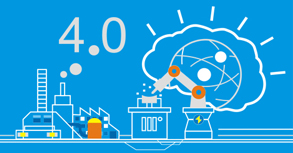In general, investors enter the market, may encounter risk of the following categories:
1, the systemic risk
The stock market is a barometer of national economy. The stand or fall of macroeconomic situation, fiscal policy and monetary policy adjustment, the change of political situation, exchange rate fluctuations, changes in the money supply and demand, etc., can cause the fluctuation of the stock market. For securities investors, can’t eliminate the risk, investors can’t through diversified portfolio of securities. This is the cause of the systemic risk. The sources of systemic risk is mainly composed of macroscopic factors such as political, economic and social environment. Its composition mainly includes the following four categories:
(1) the policy risk
The government’s economic policy and management measures may lead to the securities return loss, which behaves particularly outstandingly in the emerging markets. The change of economic policy, can affect the company profits, the change of bond yields; The change of the securities trading policy, can directly affect the stock price. And some seemingly unrelated policy changes, such as for private housing policy, may also affect the stock market money supply and demand. Therefore, every economic policy, regulation, or adjustment, will have certain effect on the stock market, some even will produce very big effect, thus lead to large fluctuations in the market as a whole.
(2) the interest rate risk
Different financial instruments, there are different risks and benefits. Even as national debt so that almost no credit risk of bonds, also not is what the investment risk. If, 10 years ago you purchased a face value of 1000 yuan, 10% annual interest rates of bonds, up to now, if the other bonds are paying 12% annual interest, you can’t again in the face of the 1000 yuan to sell the bonds to others. You will certainly be below par value, making the actual yield reached 12%. This due to the uncertainty of future interest rate changes, and lead to bonds depreciation risk, is the interest rate risk of the bond.
In securities trading markets, securities market price is according to the market price, rather than trading according to their face value. The change of market price is also affected by market interest rates at any time. In general, the market interest rate rises, the stock market price will fall and the market interest rates, stock market prices will rise, the trend of the reverse in the bond market is particularly prominent.
(3) the purchasing power risk
In real life, everyone will encounter such a problem, because of rising prices, the same amount of money, may not be able to buy the same goods in the past. This price change led to the capital of the uncertainty of the actual purchasing power, called purchasing power risk, or the risk of inflation.
Also in the securities market, due to the investment stock returns in the form of currency to pay, in the period of inflation, the purchasing power of the currency, also is the actual profitability and investment will bring loss to investors.
(4) market risk
Market risk is the most common in the securities investment activities, one of the most common risk, is caused by the fluctuation of stock price directly. Especially in emerging markets, resulting in the stock market volatility factors is more complex, price volatility, the market risk is big. Therefore, a deep repugnance to the blind buy and sell stocks.
2, the systemic risk
A single stock prices with the operating performance of listed companies and major events are closely related. The company’s operation and management, financial condition, market sales, the change of such factors as the major investment will affect the company’s share price. This risk is mainly affect a kind of securities, and other securities have no direct contact of the market, investors can through the method of diversification, to offset the risk. This is a systemic risk. As a result, the systemic risk may be called diversifiable risk, mainly includes the following four categories:
(1) the management risk
Operating risk mainly refers to the company’s business so bad, even failure, failure and losses to investors. The company’s operations, the change of production and investment activities, lead to changes in the company profits, causing investors yield reduction or loss of the principal. Such as the change of the economic cycle or commercial operating cycle impact on corporate profits, the change of competitors the impact on the company’s business, company’s own management and decision level are likely to lead to business risks.
There are many influence factors of the company’s operating performance, investors in the analysis of the company’s operating risk, should not only grasp the influence of the macro economic environment, and to grasp different industries, different ownership types, different scale of operation, management style, product features such as the impact on the company performance.
(2) the financial risk
Financial risk refers to the company due to financing risk, the company will lose solvency risk. The company’s financial structure is unreasonable, tend to cause the company financial risk. The company’s financial risk main show is: unable to repay maturing debt, the risk of interest rate changes (i.e. the company during the period of debt, such as inflation, the influence of growth changes in lending rates, an increase in interest rates will increase the company’s cost of capital, to offset the expected return), and fundraising risk (namely due to the company’s indebtedness of the company’s debt ratio increase, the corresponding reduced the level of guarantee of the company to the extent of the obligee’s right to limiting the ability of a company to increase debt financing from other sources).
Formation of financial risk factors mainly include the capital debt ratio, the duration of the assets and liabilities, debt structure and other factors. In general, the company’s capital debt ratio is higher, the unreasonable debt structure, the financial risk is bigger. When investors in the investment, should put special emphasis on the analysis of the company’s financial risk.
(3) credit risk
Credit risk is also called default risk, refers not to the securities holders pay principal and interest on time and make the possibility of investor losses. Mainly for bond investments, for stock only in the case of bankruptcy. The direct cause of the risk of default is the company’s financial situation is bad, the worst is the company’s bankruptcy. So no matter for investment bonds or shares, investors must to issue bond credit rating and issue shares of the listed company to carry on the detailed understanding. "Know both sides, in order to fight."
(4) the risk of moral hazard
Moral hazard refers to the listed company managers’ moral hazard. The shareholders and managers of listed companies is a commissioned - agent relationship. Because the goal of the managers and shareholders is different, especially in the case of asymmetric information, managers’ behavior may cause damage to the interests of the shareholders.
(5) the crash and its characteristics
Crash is the stock market disaster or catastrophe, is refers to the stock market inherent contradictions accumulated to a certain extent, due to the effect of random factors, all of a sudden outbreak of share prices collapsed, causing huge social economy and cause huge loss of abnormal economic phenomenon. Crash is different from the general stock market volatility, but also different from the general stock market risk, with a sudden and destructive, correlation, the characteristics of uncertainty. A crash has had a huge impact on financial markets, it is often the beginning of the recession.
From the perspective of a foreign securities market crash, cause prices, excessive speculation bubble economy, is an important cause of the crash. Twice in 1929 and 1987, global stock market crash, is due to the huge stock market bubble, share prices collapse caused by the bubble burst, the formation of a crash.
3, transaction risk
If the above two types of risk that investors in the face of stock price changes every day, so the complexity of stock investment operation is another risk faced by investors, in which investors due to his careless or brokerage, looted from stocks and funds are many by extraction, deposit was divert risk.
For the former two types of risk, the vast number of investors securities market should be study more knowledge, more understanding, analysis and study of macroeconomic situation and operating performance of listed companies, strengthen the consciousness of risk prevention, risk prevention skills, improve the ability to resist risk. According to the third type of risk, remind you pay attention to the relevant matters, learn to self-protection, as much as possible, reduce the risk of trading process.





